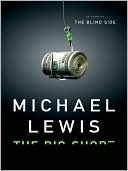More on this book
Community
Kindle Notes & Highlights
Read between
January 5 - January 12, 2025
“The thinking in subprime,” says Jacobs, “was there was this social stigma to being a second mortgage borrower and there really shouldn’t be. If your credit rating was a little worse, you paid a lot more—and a lot more than you really should. If we can mass market the bonds, we can drive down the cost to borrowers. They can replace high interest rate credit card debt with lower interest rate mortgage debt. And it will become a self-fulfilling prophecy.”
How do you make poor people feel wealthy when wages are stagnant? You give them cheap loans.
The market might have learned a simple lesson: Don’t make loans to people who can’t repay them. Instead it learned a complicated one: You can keep on making these loans, just don’t keep them on your books.
swaps. A credit default swap was confusing mainly because it wasn’t really a swap at all. It was an insurance policy, typically on a corporate bond, with semiannual premium payments and a fixed term. For instance, you might pay $200,000 a year to buy a ten-year credit default swap on $100 million in General Electric bonds. The most you could lose was $2 million: $200,000 a year for ten years. The most you could make was $100 million, if General Electric defaulted on its debt any time in the next ten years and bondholders recovered nothing. It was a zero-sum bet: If you made $100 million, the
...more
Burry did not think investing could be reduced to a formula or learned from any one role model. The more he studied Buffett, the less he thought Buffett could be copied; indeed, the lesson of Buffett was: To succeed in a spectacular fashion you had to be spectacularly unusual. “If you are going to be a great investor, you have to fit the style to who you are,” Burry said. “At one point I recognized that Warren Buffett, though he had every advantage in learning from Ben Graham, did not copy Ben Graham, but rather set out on his own path, and ran money his way, by his own rules…. I also
...more
“Senior management’s job is to pay people,” he’d say. “If they fuck a hundred guys out of a hundred grand each, that’s ten million more for them.
They have four categories: happy, satisfied, dissatisfied, disgusted. If they hit happy, they’ve screwed up: They never want you happy. On the other hand, they don’t want you so disgusted you quit. The sweet spot is somewhere between dissatisfied and disgusted.”
Goldman Sachs created a security so opaque and complex that it would remain forever misunderstood by investors and rating agencies: the synthetic subprime mortgage bond–backed CDO, or collateralized debt obligation.
Their—soon to be everyone’s—nifty solution to the problem of selling the lower floors appears, in retrospect, almost magical. Having gathered 100 ground floors from 100 different subprime mortgage buildings (100 different triple-B-rated bonds), they persuaded the rating agencies that these weren’t, as they might appear, all exactly the same things. They were another diversified portfolio of assets! This was absurd. The 100 buildings occupied the same floodplain; in the event of flood, the ground floors of all of them were equally exposed. But never mind: The rating agencies, who were paid fat
...more
The details were complicated, but the gist of this new money machine was not: It turned a lot of dicey loans into a pile of bonds, most of which were triple-A-rated, then it took the lowest-rated of the remaining bonds and turned most of those into triple-A CDOs. And then—because it could not extend home loans fast enough to create a sufficient number of lower-rated bonds—it used credit default swaps to replicate the very worst of the existing bonds, many times over. Goldman Sachs stood between Michael Burry and AIG. Michael Burry forked out 250 basis points (2.5 percent) to own credit default
...more
free, and booked all the profit up front. There was no need on either side—long or short—for cash to change hands. Both sides could do a deal with Goldman Sachs by signing a piece of paper. The original home mortgage loans on whose fate both sides were betting played no other role. In a funny way, they existed only so that their fate might be gambled upon.


